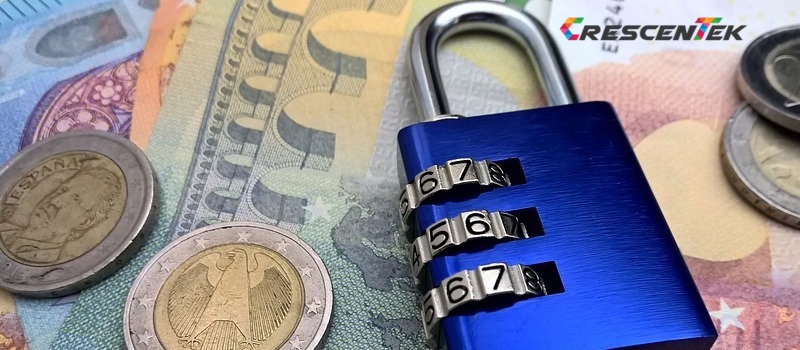- Posted On: 9 Jan 2019
- Posted By: Crescentek
30 Jun 2017

Nowadays most of our communications occur through the internet. While an increasingly connected world makes our lives pleasanter, it also poses great risk as we expose our personal data to cyber criminals or hackers. The hackers have devised numerous ways to steal important data which is then put to misuse. Below are six most common ways your data can be stolen.
Phishing basically is a fake email that poses as legitimate. Taking advantage of this apparent vulnerability, hackers create phishing emails by which they intend to pilfer your confidential information such as passwords, bank account numbers, etc. This type of email appears to come from seemingly known persons, your bank or your employer, thus reassuring bona fide. What’s more, these emails invariably create some emergency or panic, urging you to give away your personal details.

The phishing email usually features a link which on clicking will take you to a fake web page. For example, the link might take you to a fake bank website which looks very legitimate but in reality is just a lookalike. If, however, you become a victim of this scam and enter your account details on the website, the details will actually go to the hacker’s server instead of going to the bank and the hacker will have all the information that the victim has unwittingly provided for the hacker.
Malware represents malicious software created with the intension of compromising a system, while pilfering the data stored in the system. The program, inter alia, is capable of performing many functions that include stealing of data as well as blocking off vitally sensitive data, sometimes modifying the system’s core functionalities, while surreptitiously tracking the victim’s cyber related activities.
Ransom malware, or Ransomware, is a type of malware that prevents you from accessing your system or personal files and demands ransom payment in order to regain access. The earliest variants of ransomware were developed in the late 1980s, and payment was to be sent via snail mail. Nowadays, ransomware authors order that payment be made via cryptocurrency or credit card.
Trojans are also a form of malware that tends to create loopholes in your security to allow invaders monitor your activities remotely. It, nevertheless, disguises itself as rightful software and/or poses to be included in legitimate software that has been tampered with.
Spyware is malware designed to spy on you. It hides in the background and tracks everything you do online, including your passwords, credit card numbers, surfing habits and chats. It can record keystrokes, videograph you from your webcam and even listen from your microphone.
Keylogger is a type of surveillance software that once installed on a system can record each and every keystroke performed on that system. The recoding is subsequently saved in a log file in encrypted form. It can record instant messages, email, and can capture all the information you type out on your keyboard comprising usernames, passwords, as well as personally identifiable information. Needless to say, it keeps a check on a computer user’s activities for ulterior purposes.

You wake up in the morning and check your messages and see that at 9.30 last night Rs 20,000 has been spent on your credit card for three lace wigs from a department store in Mumbai. But the only problem is, you are in New Delhi, and you have never even thought about buying a wig, let alone three. However, it did not take you long to understand that it was a bank fraud. As such instances of banking fraud is becoming all too common in India, it is no wonder that people are losing faith in keeping money in Bank.
Until the digital economy campaign by the government, India was a cash-centric economy, where cash accounted for 95% of transactions where 90 per cent of retailers lacked means to accept digital payments, 85 per cent of workers were paid in cash, while half of the population did not have bank account.
Then there appeared digital economy driven by the government. India’s biggest e-payment provider, Paytm, reported a three-fold increase in the number of users. In October 2016, ATM withdrawals amounted to Rs 2.55 lakh crore; after demonetisation it declined to Rs 85,ooo crore in December 2016. But, after the RBI removed the ATM withdrawals limit in January 2017, withdrawals reached Rs 1.52 lakh crore. It is a clear sign that people were withdrawing as much cash as possible for fear of an uncertain future, along with vague or doubtful banking norms.